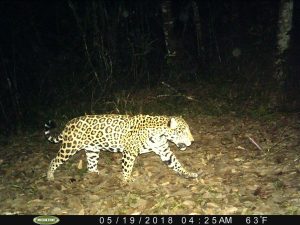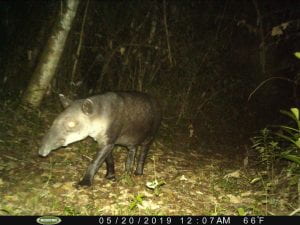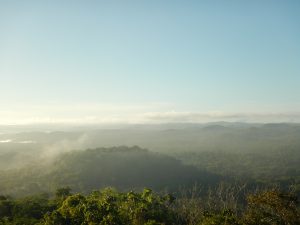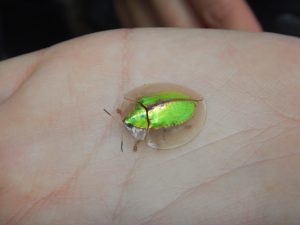
Day 7: May 21st 2018, Las Cuevas
So I am just going to preface that this was a pretty amazing day for all of us, especially me as the mammals expert. We woke up around 4:30 am, went on an early hike on the bird trail which was incredibly hilly, ate breakfast, then went out to collect our camera traps from the first experiment. We saw some interesting stuff including a Golden Tortoise Beetle which looked like it had a clear shell over it (resembling a tortoise shell). It actually stayed on Professor Solomon until we finished our hike. After that we had lunch, and then we set iff with the other group staying at Las Cuevas to find some leaf cutter ant nests.
First we dug into a small, one year old nest until we reached a tunnel that lead to their fungus garden. You see, leaf cutter ants are agriculturists who cut and collect leafs to feed to a fungi that they cultivate to eat. We actually dug so far in that we found the queen and go to hold her. Next we dug into a 15-20ft across nest that was between 15 and 20 years old. Yes, it actually was that large. We actually dug until we found their dump chamber that was full of old fungi, dead ants, and ants working the dump. The dirt was even warm from the decomposition.
However, after dinner, we look at our camera traps…. I’ll just start but saying that we say more than any other group in bio 319 history has ever seen. We saw Baird’s Tapir with its long upper lip, fat butt, and stubby tail. We saw 2 jaguars!!!! They were even confirmed to be different individuals based on their patterning. We saw a total of 8 collard Peccaries: 7 on trail, 2 off trail. They essentially look like wild pigs with more triangular heads. I noted that 2 imaged peccaries appeared to be in a juvenile, adult transition with browner fur around the head and a black strip down the back. We captured 3 images of what we believe etc to be pumas, one of which was so close to the lens that it was complexity whited out making it impossible to see anything but the outline. We also saw Alfaro’s rice rat roaming around the off trail forest floor. It had a distinctly triangular head with a downward sloping nose ridge making it quite easy to identify.
We also saw an elusive 9 Banded Armadillo which I honestly was not expecting to see. They don’t necessarily have to have 9 bands but they are distinctly banded. Finally, we saw a coatimundi, a mammal in the raccoon family. Its about the size of a medium sized dog with a skinny and small head. The one we saw had orangish-brown fur and it was standing atop a fallen tree trunk.
All I can saw is that seeing a single Baird’s Tapir or large cat was the goal, and we were all completely blown away. However, apparently something is fruiting which apparently attracts some mammals which would also attract the big cats making our timing the most ideal time to set our camera traps. To say the least, we all went to bed in awe, and even we were in disbelief and jealous of ourselves despite the fact hat we were living it. What a wonderful last day in the Chiquibul. Also we miss you Adrienne!








